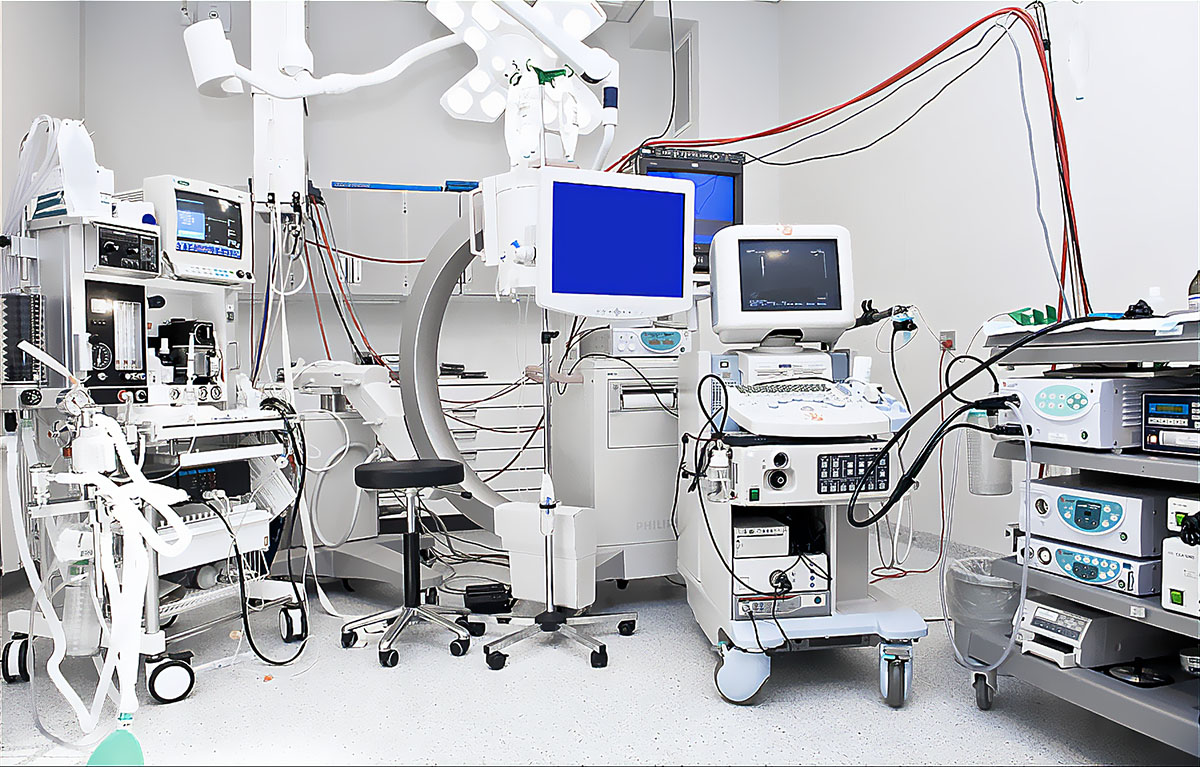Close your eyes and picture a hospital room. You likely imagined hard, glossy white plastics everywhere; in the medical devices, the equipment used by doctors and nurses, and even the furniture. Plastic resins are ideal for medical applications because of their low cost, toughness, and easily sanitized nonporous surfaces. They’re lighter, cheaper, and easier to replace than the glass and metal favored by previous generations. But the medical applications of plastic go far beyond what the average patient sees. Here, we present some examples of plastics used in medical devices and equipment you might not have known about.
Polyvinyl chloride
The same plastic that makes up the humble PVC pipe has a wide range of applications. The tough, cheap PVC that’s found in home improvement stores is made without plasticizers, and this unplasticized PVC is a great choice for any device that has to be replaced often. It’s also a common material for artificial limbs. With the addition of plasticizers, PVC becomes softer and rubbery; it sees frequent use in the manufacturing of the soles of shoes and imitation-leather clothing. In medicine, uses include the pipes, seals, and gaskets in medical devices. It’s also a common material for medical gloves.
High-density polyethylene
HDPE is the plastic you probably imagine in medical applications: white and rigid with a waxy luster. That’s because its toughness and nonporous surface make it an ideal candidate to make the protective shells of medical devices. However, not all HDPE is so visible. One reason why it’s so prized by doctors is because it absorbs little water and isn’t affected by most acids, alkali or oxidizers. That makes it an increasingly common choice for medical implants.
Polycarbonate
If you’ve ever seen a “glass” window that isn’t as cool to the touch as real glass would be, there’s a good chance you were looking at polycarbonate. It’s just as transparent as glass, but much tougher. It doesn’t shatter on impact, is chemical resistant, and can withstand higher temperatures than glass without melting or changing color; in fact, it’s transparent at any temperature. This makes it an option for see-through covers and hoods on equipment, lab safety goggles, and any other clear, rigid items.
Polyetherimide
PEI is a rigid plastic that’s mostly used behind the scenes. It isn’t as cheap as some other plastics, but it has extremely high heat resistance, which means it’s used in small amounts to make protective covers for components that can be hot. For example, it’s what makes up the stiff plastic coating around the socket of a lightbulb and several small but crucial elements found under the hood of your car. In a doctor’s office, it makes up the circuit board of any computerized device, because it can’t be warped by an overheated wire. It may even constitute some surgical tools, as it is heat-resistant enough to sanitize in an autoclave.
Acrylonitrile butadiene styrene
ABS might be the first plastic you think of when you imagine a plastic resin: the stuff that’s in your children’s LEGO or Kre-O bricks, your computer’s case, and the filament in a 3D printer. Its cheapness and malleability make it the choice for non-durable medical goods like inhalers, tracheal tubes, and non-dissolvable sutures. The fact that it can be used in a 3D printer is also a point in its favor, as hospitals find more and more uses for their 3D printers.
It’s hard to imagine a modern hospital without plastics. They’re cheap, durable, lightweight, and sanitary. For more information about plastic applications, either in medical devices & equipment or elsewhere, contact us today, and we’ll be glad to share our expertise.

